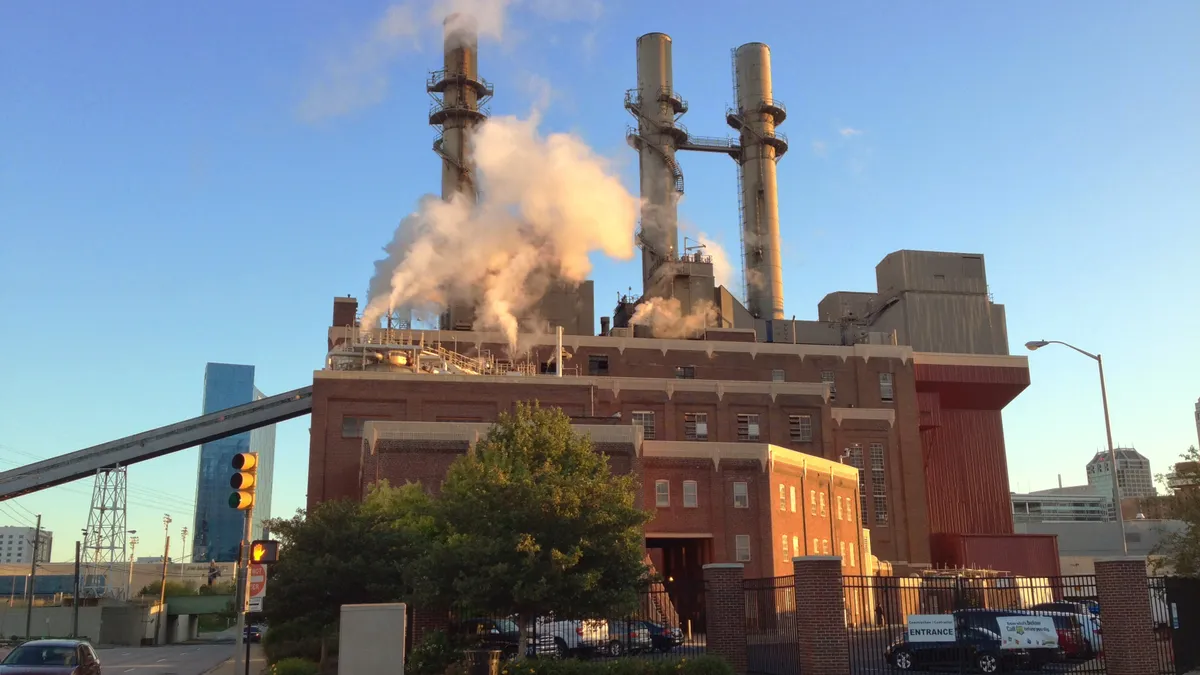Dive Brief:
- A final analysis of Indiana's future energy needs, released Wednesday, predicts slow demand growth over the next 20 years, but also a need for 9.3 GW of new resources as older plants are retired.
- Indiana will need 3.6 GW of new resources by 2025, 6.3 GW by 2030 and 9.3 GW by 2035, filled by a range of natural gas, wind, solar, efficiency and other resources, according to the State Utility Forecasting Group.
- The analysis was prepared by staff of the Indiana Utility Regulatory Commission at the direction of a 2015 state law. But an earlier draft of the report faced criticism for accepting utility analysis at face value, particularly their preference for constructing new gas-fired generation instead of renewables, and critics say the final version does not adequately address those concerns.
Dive Insight:
With the final report in hand, a major critic says there were almost no changes made from the draft. Indiana utilities say they've yet to examine the document.
"We're exceptionally disappointed," Citizens Action Coalition Executive Director Kerwin Olson told Utility Dive. "It's just a photocopy and paste of utility IRPs, and they've added some language about how robust and transparent the processes are."
"The only changes were a bunch of disclaimers from the commission, which is how they chose to address the criticism and critiques from stakeholders," Olson said.
The report says "it is important to note that the Statewide Analysis is not to be construed as a statewide energy plan and does not set policy." But critics say that falls short.
"We are not at all happy with the final product," Olson said. "We would have hoped they'd incorporate some stakeholder comments and critiques."
While neither Duke Energy or Nisource's Northern Indiana Public Service Co. (NIPSCO) had taken a close look at the report by Wednesday afternoon, NIPSCO officials said they have made serious improvements to their IRP process.
In September, NIPSCO revealed a tentative plan to shut down the majority of its coal generation within five years and to stop burning coal entirely within the next decade. The utility put forth the plan after an all-source request to the market was added to its IRP process.
"We went to the market, and wanted to really see what was available," spokesperson Nick Meyer told Utility Dive, adding that NIPSCO received proposals for roughly three times its capacity today. "We saw a large range of renewable options that were viable," he said.
NIPSCO's IRP process is a bright spot in Indiana's energy planning, Olson said.
"They've done it right, to this point in time," he noted. "They made the right decision with the all-source IRP ... NIPSCO is what we'd like to see."
He cautions, however, that the IRP is "an informal process, a non-docketed process," where the plan is neither rejected nor accepted, but filed with the commission. When it comes to the real outcomes, "we'll see the numbers," Olson said.














